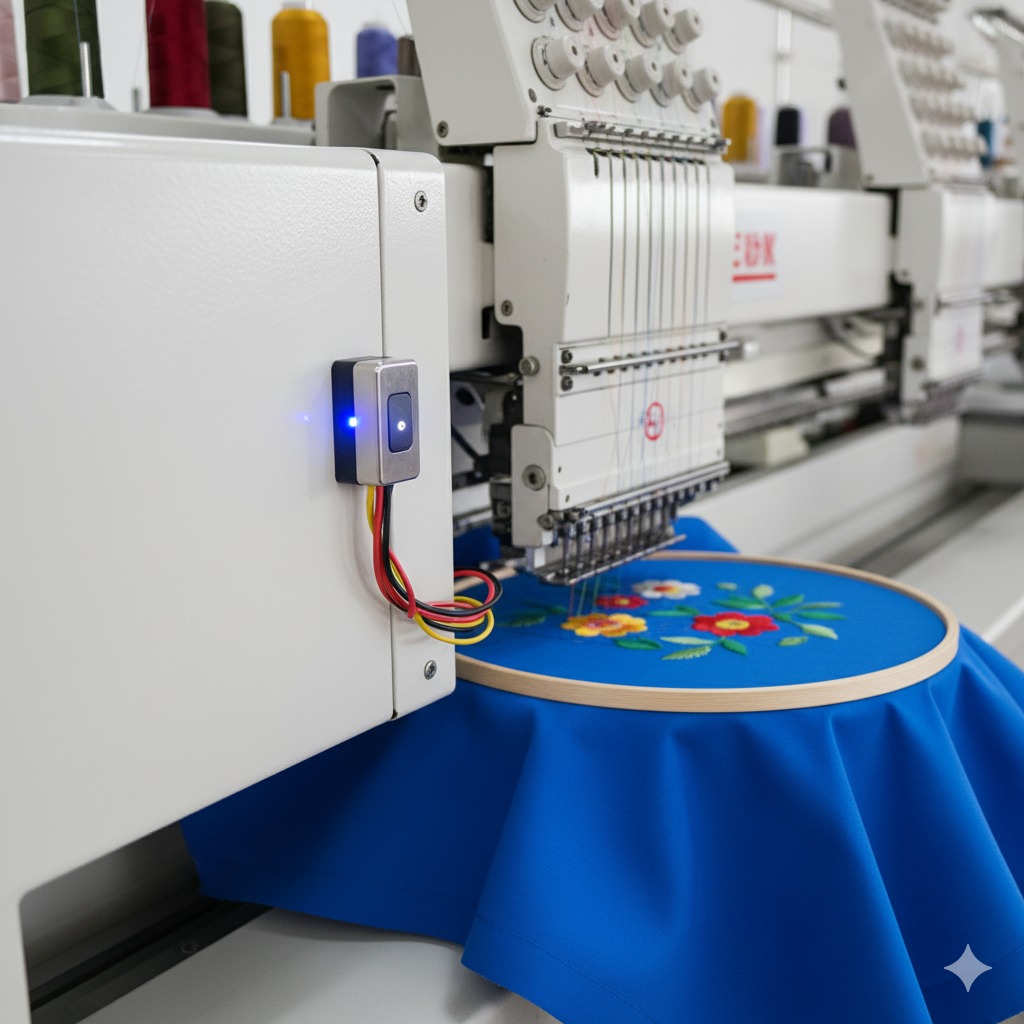Safety is a critical component of any high-speed industrial machine, and embroidery machines are no exception. One of the most important safety mechanisms used in modern embroidery machines is the safety door sensor. This component ensures operator safety, protects machine components, and prevents costly downtime caused by accidents.
At 360 Digitizing Solutions, we offer premium-quality safety door sensors compatible with major embroidery machine brands such as Tajima, Barudan, SWF, and Brother. This article explains what safety door sensors are, how they work, and why they are essential for smooth and safe embroidery production.
What is a Safety Door Sensor?
A safety door sensor is a device that detects whether the machine’s cover, door, or guard is closed. It sends a signal to the machine controller to allow or stop operation. If the door is open, the machine will not run, protecting the operator from moving parts such as needles, hooks, and belts.
Key Functions:
- Operator Protection: Prevents accidental injury when the machine is running.
- Machine Protection: Stops operation if doors are open, avoiding damage to machine parts.
- Production Safety: Prevents accidental stitch errors caused by interruptions.
- Compliance: Meets industrial safety standards for workplace protection.
Types of Safety Door Sensors
| Type | How It Works | Application |
|---|---|---|
| Magnetic Safety Switch | Uses a magnetic field between switch and actuator to detect door position. | Common in embroidery machine covers and side doors. |
| Mechanical Interlock | Requires physical engagement of switch and actuator. | Used where more rugged safety confirmation is needed. |
| Optical/Proximity Sensor | Uses light beam or proximity detection to sense door closure. | Advanced machines requiring non-contact detection. |
Why Safety Door Sensors Are Essential
- Prevent Injuries: Protect operators from needle strikes or moving parts.
- Reduce Downtime: Avoids damage to machine when a door is accidentally opened during production.
- Enhance Production Quality: Ensures the machine only runs when it is safe to do so, preventing misaligned stitches.
- Comply with Safety Standards: Helps meet OSHA and CE machine safety requirements.
Key Considerations When Choosing a Safety Door Sensor
- Compatibility: Ensure the sensor matches your embroidery machine model.
- Switching Type: Choose magnetic, mechanical, or optical based on machine design.
- Durability: Look for sensors rated for industrial environments.
- Wiring & Connector Type: Ensure proper connection to your controller.
- Fail-Safe Design: Choose sensors that default to a safe state if damaged.
Supported Brands
Our safety door sensors are compatible with:
- Tajima – Reliable sensors for multi-head and single-head machines.
- Barudan – OEM-standard safety sensors for high-output setups.
- SWF – Quality sensors designed for consistent performance.
- Brother & Toyota – Perfect for small shop operations requiring safe working conditions.
Maintenance Tips for Safety Door Sensors
- Regular Inspection: Check sensor alignment and mounting.
- Clean Contacts: Remove dust and lint buildup regularly.
- Test Functionality: Periodically open the door while machine is idle to confirm machine stops as expected.
- Replace Damaged Units: Faulty sensors can compromise safety and production.
Why Buy from 360 Digitizing Solutions
- High-Quality Safety Sensors tested for reliability.
- Expert Support to match the correct sensor with your machine model.
- Competitive Prices with global shipping.
- Warranty & After-Sales Service for peace of mind.
Conclusion
Safety door sensors are essential for safe, efficient, and reliable embroidery machine operation. Choosing the right sensor and maintaining it properly protects operators, prevents downtime, and keeps production running smoothly. Trust 360 Digitizing Solutions for genuine and high-quality safety door sensors tailored to your embroidery machine.





